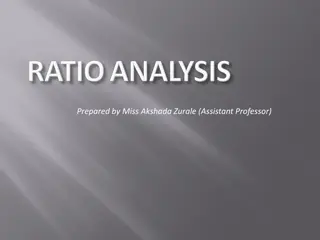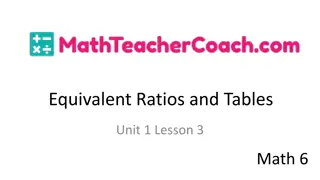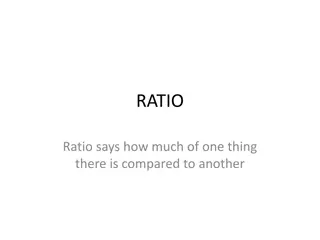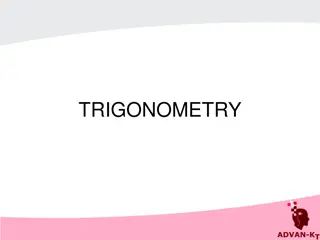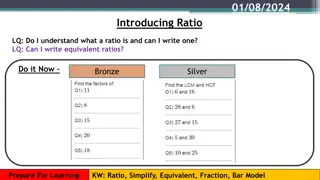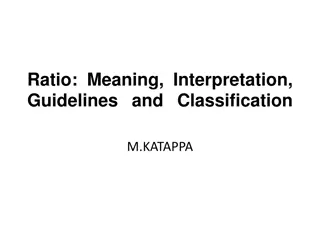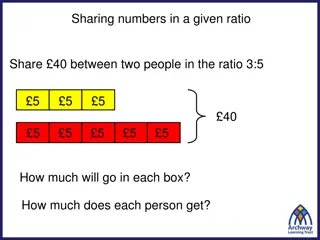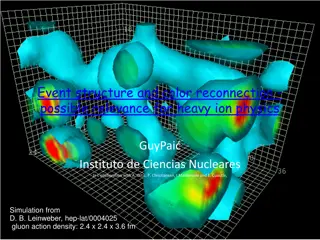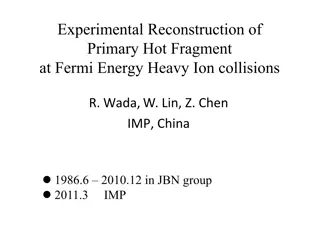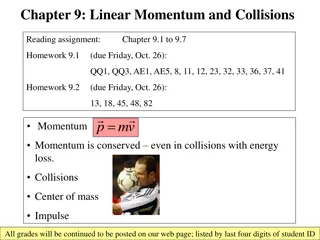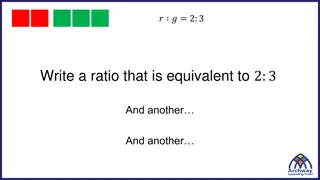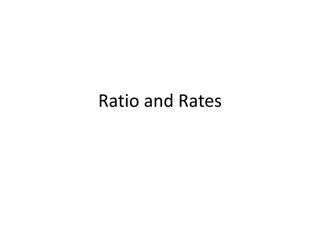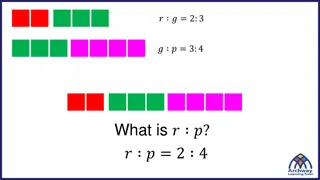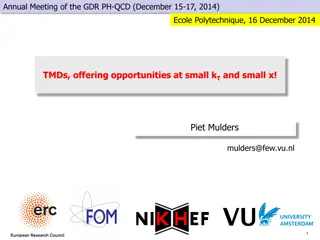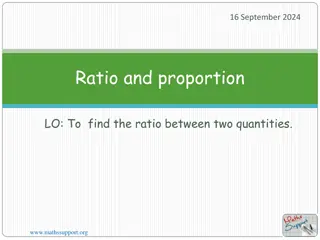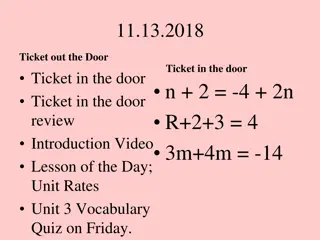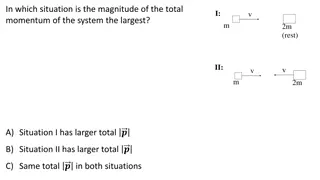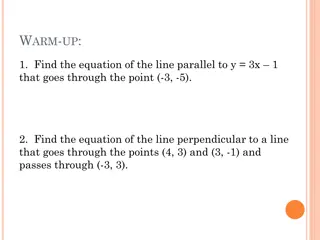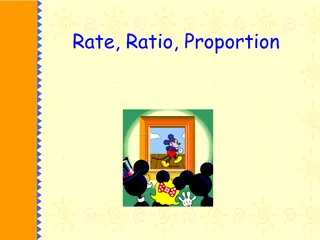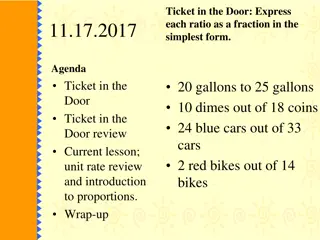Open and Hidden Strangeness in Central A+A Collisions: Ratios of Transverse Energy Density
This work delves into the exploration of identified hadrons with varying strangeness content in high-energy collisions, shedding light on the dynamics and properties of the medium. The study involves the investigation of meson production and the systematic analysis of transverse energy measurements in collision events.
Download Presentation

Please find below an Image/Link to download the presentation.
The content on the website is provided AS IS for your information and personal use only. It may not be sold, licensed, or shared on other websites without obtaining consent from the author.If you encounter any issues during the download, it is possible that the publisher has removed the file from their server.
You are allowed to download the files provided on this website for personal or commercial use, subject to the condition that they are used lawfully. All files are the property of their respective owners.
The content on the website is provided AS IS for your information and personal use only. It may not be sold, licensed, or shared on other websites without obtaining consent from the author.
E N D
Presentation Transcript
1. 7th International Conference on Particle Physics and Astrophysics Open and hidden strangeness in central A+A collisions from SPS to LHC: ratios of transverse energy density at midrapidity for the identified hadrons with different strangeness content O.M. Shaposhnikova1, A.A.Marova2, G.A. Feofilov2 1Lomonosov Moscow State University 2Federal State Budgetary Educational Institution of Higher Education "Saint- Petersburg State University", Saint Petersburg, 199034 Russia This work was supported by St. Petersburg State University project ID:94031112.
2. Interesting strangeness Hadrons with (multiple) strange quarks Can be easily reconstructed and identified in experiment! Small hadronic cross section Sensitive to dynamics of the medium Systematic study of medium properties! -meson (1020) The lightest meson with hidden flavor. Contains only strange quarks. [1] A dramatic increase prediction in the -meson after the formation of the quark-gluon plasma (QGP). [1] - Asher Shor , PHYSICAL REVIEW LETTERS, 25.70.Np, 12.35.Ht, 21.65 (1985)
3. Motivation The ratio of particles with different strangeness can indicate whether there is an increased production of mesons. , K, K0S, , , -, , -
4. Transverse energy [2] [3] [2] S - is the transverse overlap area of the colliding nuclei - is the Bjorken energy density is the formation time [2] - J. D. Bjorken, Phys. Rev. D 27, 140 (1983) [3] - J.T. Mitchell (for the PHENIX Collaboration), Transverse Energy Measurements from the Beam Energy Scan in PHENIX, Nuclear Physics A 00 (2022)
5. Sources of experimental data used [4]Abelev et al.(ALICE Collaboration) K0Sand production in Pb-Pb collisions at SNN= 2.76 TeV , Phys.Rev.Lett. 111 (2013) 222301, 2013 [5]Adamczyk et al. Probing Parton Dynamics of QCD Matter with and Production , Phys.Rev.C 93 (2016) 021903, 2016. [6]Abelev et al.(ALICE Collaboration ), Multi-strange baryon production at mid-rapidity in Pb-Pb collisions at sqrt(s_NN) = 2.76 TeV , Phys.Lett.B 728 (2014) 216-227, 2014 [7]Adam et al. (STAR Collaboration) Strange hadron production in Au+Au collisions at SNN = 7.7, 11.5, 19.6, 27, and 39 GeV , Phys.Rev.C 102 (2020) 034909, 2020.
7. dN/dy vs. collision energy in A+A A+A collisions 0-5% [8] K. Aamodt et al. (ALICE Collaboration) Phys. Rev. Lett. 105, 252301 Published 13 December 2010
6. Calculating the average p The Levy function: n, T, and m0- fitting parameters Average transverse momentum: a and b are extended intervals over the entire range of p To estimate systematic errors we will use the blast-wave function.
8. <dE /dy> vs. SNN, very central (0-5 %) | |< 0.5 Approximation function: <dE /dy> = Q *( SNN)n Particles + - + - K0s n 0.36 0.04 0.30 0.05 0.28 0.04 0.39 0.08 0.44 0.06 The dependence of <dE /dy> on SNNfor the most central collisions (0-5%) at energies of 39, 200, and 2760 GeV. Similar functional dependencies for different particles.
9. -meson and particles with u- and d- quarks [9] Approximation function: <dE /dy> = Q *( SNN)n Particles n/2 0.18 0.02 0.184 0.05 The slope of the function for mesons is similar from that of strange hadrons. [9] Shaposhnikova, Marova, Feofilov, Open and hidden strangeness with kaons and -mesons in Bjorken energy density approach for central A+A collisions from SPS to LHC , Physics of Particles and Nuclei
10. <dE /dy> /<dE /dy> particles <dE /dy> /<dE /dy> particles= Q *( SNN)n A different energies, the fractions of energy expended on the prodaction ofvarios particles with strangeness remain constant.
11. Theoretical models Schwinger-like formula Thermal model [10] k is the string tension k 1 GeV/fm [11] [10] S.A. Bass et al. Microscopic Models for Ultrarelativistic Heavy Ion Collisions , Nuclear Theory (nucl-th); High Energy Physics - Phenomenology <p> mean string tension. [11]V.V.Vechernin, Physics of Particles and Nuclei, 2023, Vol. 54, No. 3, pp. 528 535, 2023.
12. Conclusions 1) From the dependence of the mean transverse energy <dE /dy> on SNN, we do not observe a relative increase of production of the -meson to the multistrange particles as it was predicted in [1]. 2) The behaviour of multiplicity and the average transverse energy <dE /dy> vs. SNN have similar (close) power-law indices. 3) The ratios of mean transverse energies <dE /dy> of -mesons to <dE /dy> part of other strange hadrons is found to be of some constant values at different collision energies. 4) The further analysis of these peculiar dependences of ratios is planned within the frameworks of string and thermal models. [10], [11] [1] -Asher Shor , PHYSICAL REVIEW LETTERS, 25.70.Np, 12.35.Ht, 21.65(1985) [10] S.A. Bass et al. Microscopic Models for Ultrarelativistic Heavy Ion Collisions , Nuclear Theory (nucl- th); High Energy Physics - Phenomenology [11]V. V. Vechernin, Physics of Particles and Nuclei, 2023, Vol. 54, No. 3, pp. 528 535, 2023.
dN/dy vs. SNN Approximation function: <dN/dy> = Q *( SNN)n Particles + - n 0.31 0.03 0.23 0.03 0.20 0.03 0.73 0.07 0.29 0.07 0.35 0.03 + - K0s The dependence of <dN/dy> on SNNfor the most central collisions (0-5%) at energies of 39, 200, and 2760 GeV.
10. <dE /dy> particles/<dE /dy> <dE /dy> particles/<dE /dy> = Q *( SNN)n n -0.14 0.08 -0.14 0.07 -0.03 0.09 -0.13 0.08 Particles/ + - + - The function graphs tend toward a constant.


